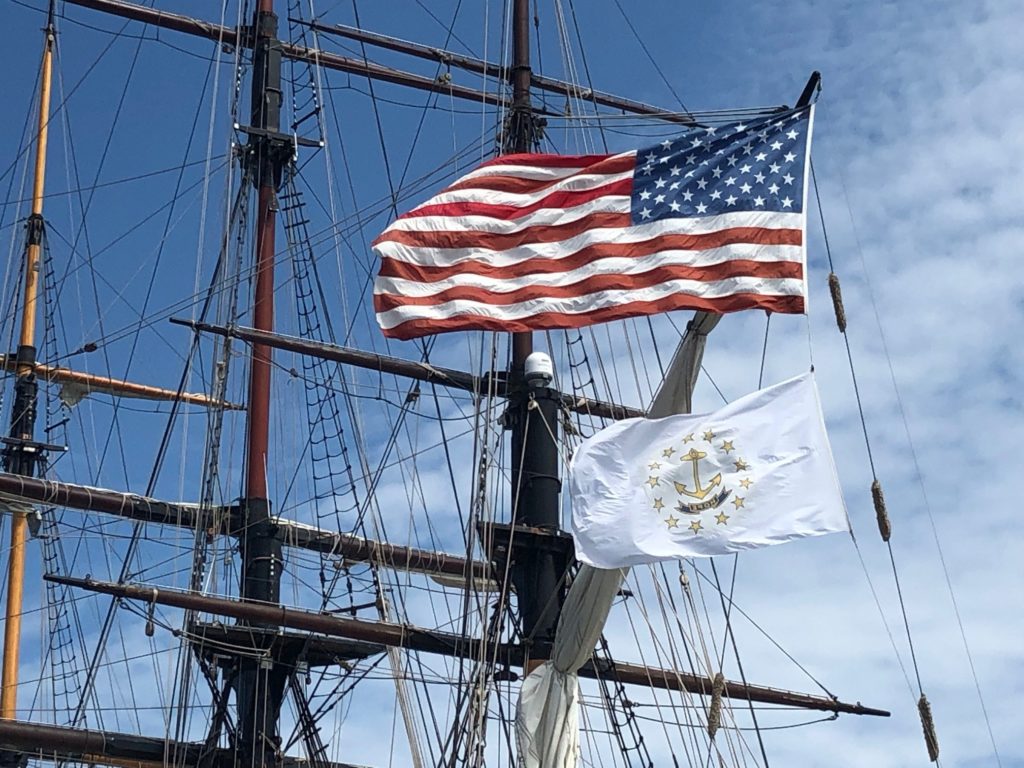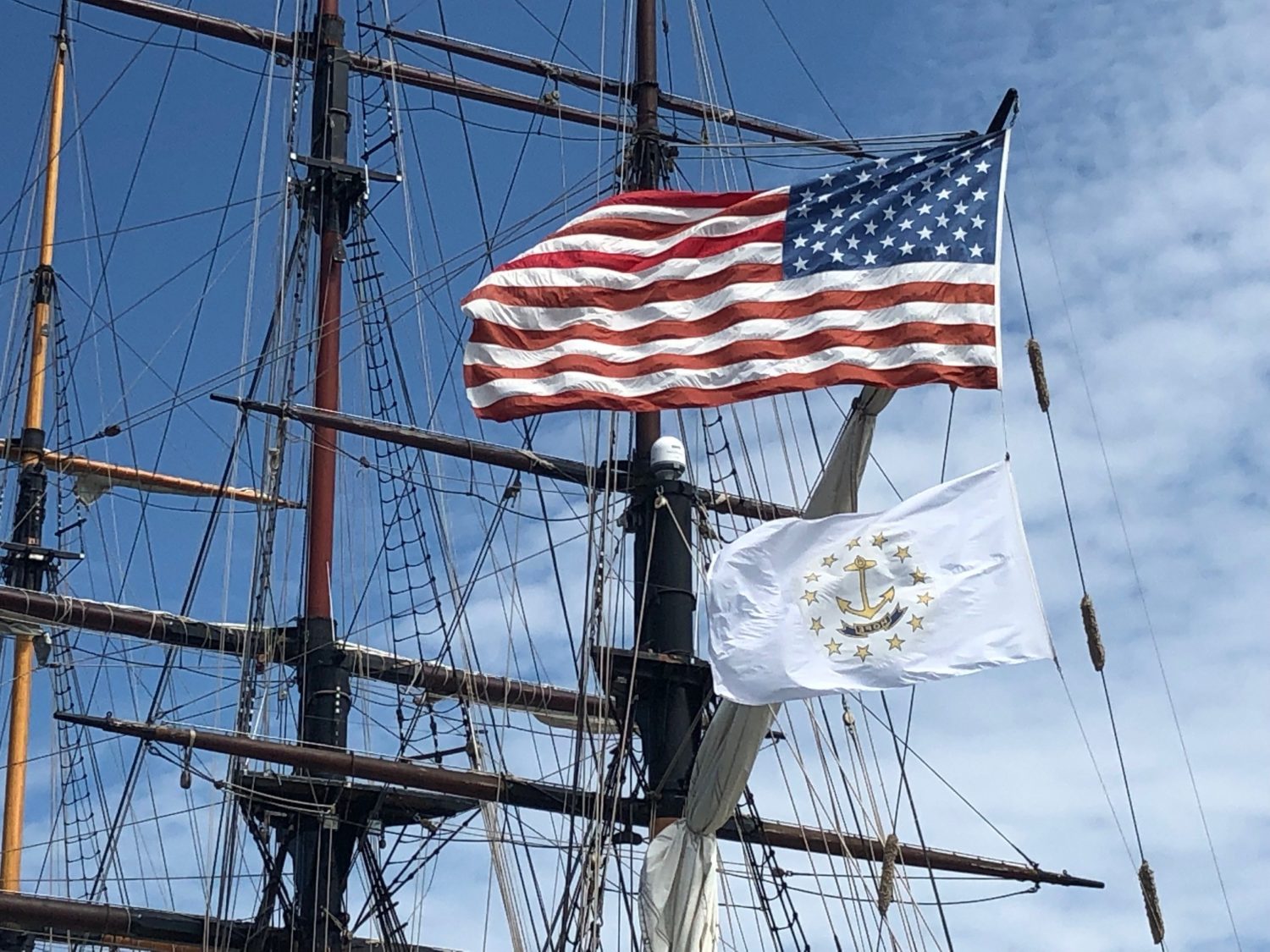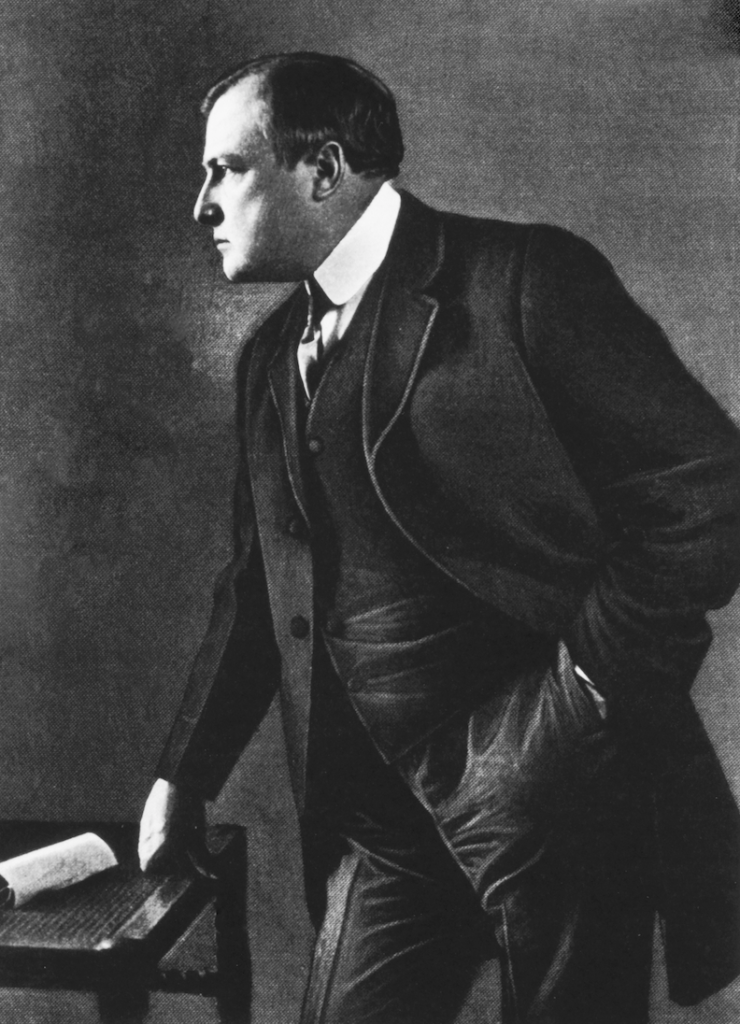Rhode Islanders have produced some of America’s greatest patriotic songs. Julia Ward Howe, who composed “The Battle Hymn of the Republic,” a Civil War anthem, was descended from two Rhode Island governors, Samuel, and Richard Ward. Her grandfather, Samuel, commanded the famed Black Regiment in the Battle of Rhode Island. Providence native George M. Cohan, wrote and sang a World War I marching song
“Over There,” and also composed “It’s a Grand Old Flag” and “Yankee Doodle Boy.”
Lesser known is George Francis O’Shaunessy, a persistent advocate of the “Star-Spangled Banner,” as our national anthem. As we observe another Fourth of July, let us salute one of that song’s major advocates, not as a composer but, rather, a proposer.
George Francis O’Shaunessy was born in County Galway, Ireland on May 1, 1868. His parents came to America when he was a child and settled in New Jersey. George was educated in New York City parochial schools and earned a law degree from Columbia University in 1889. Thereafter, he acquired a reputation as an able lawyer and political reformer. In 1904 he was appointed Deputy Attorney General of New York, and in 1906 he served as an assistant corporation counsel of New York City,
On a business trip to Rhode Island in 1907 he met his future wife, Julian Keily and settled here. This brilliant attorney soon opened the law firm of O’Shaunessy, Gainer and Cannon. In 1913, the firm became O’Shaunessy and Cannon after Joseph Gainer was elected mayor of Providence.
In 1910, O’Shaunessy gained election as a Democrat to the U.S. House of Representatives. When he took office on March 4, 1911, he became Rhode Island’s first Irish Catholic member of Congress.
During his four-term career, O’Shaunessy allied himself with Rhode Island’s reform-oriented Democrats and against the Republican political machine that controlled the state. He famously referred to the rural dominated Republican state senate, in which each municipality had one vote regardless of population, as a “strong power exercised by the abandoned farms of Rhode Island.”
As a congressman, George has been described as “a constant friend of the naval stations in Narragansett Bay” and as a major source of public funding for the developing port of Providence.
A dynamic speaker, George introduced a bill on December 6, 1914 to make The Star-Spangled Banner the national anthem. Francis Scott Key had written the lyrics in August, 1814 during the British shelling of Maryland’s Fort McHenry in the War of 1812. Ironically, Key’s words were later put to the tune of a British drinking song, “Anacreaon in Heaven.”
Despite numerous attempts by past members of Congress to make the verse the national anthem, this legislation always failed. George’s bill was approved by the House, but the Senate shot it down. Nonetheless, President Woodrow Wilson, with whom O’Shaunessy was friendly, ordered the tune played at all military functions. A reluctant President Herbert Hoover finally signed a bill making The Star-Spangled Banner our national anthem in 1931–three years before O’Shaunessy’s death at the age of sixty-six.

The Star-Spangled Banner celebrates the resilience of the defenders of Fort McHenry during the War of 1812. Fort Adams was a contemporary fort at the time that protected Newport. This is a photo at Fort Adams in December 2019, showing the U.S. flag in front of sailing ships’ masts (Christian McBurney)
Congressman O’Shaunessy’ s elective political career ended in 1918 when he unsuccessfully sought the post of U.S. Senator against the able and popular Republican incumbent LeBaron Colt of Bristol. As a consolation for his service and support, President Wilson, appointed George collector of internal revenue for Rhode Island, a post he occupied until 1921 when he returned to the private practice of law until his retirement in 1931.
In November, 1934, O’Shaunessy suffered a fatal heart attack at his home on 716 Elmgrove Avenue in Providence and he was buried Pawtucket’s St. Francis Cemetery. The name on the tomb is “Keily,” his wife’s family name, and there is no indication that this crypt is George’s final resting place.

The Star-Spangled Banner celebrates the resilience of the defenders of Fort McHenry during the War of 1812. Fort Adams was a contemporary fort at the time that protected Newport. This is a photo at Fort Adams in December 2019, showing the fort’s U.S. flag flying on a flagpole secured to the fort’s ramparts (Christian McBurney)
Thanks to biographical research by the late Glenn Laxton for his local media series “Not to Be Forgotten,” O’Shaunessy was saved from anonymity in 2010 when Laxton inducted him into the Rhode Island Heritage Hall of Fame.

























